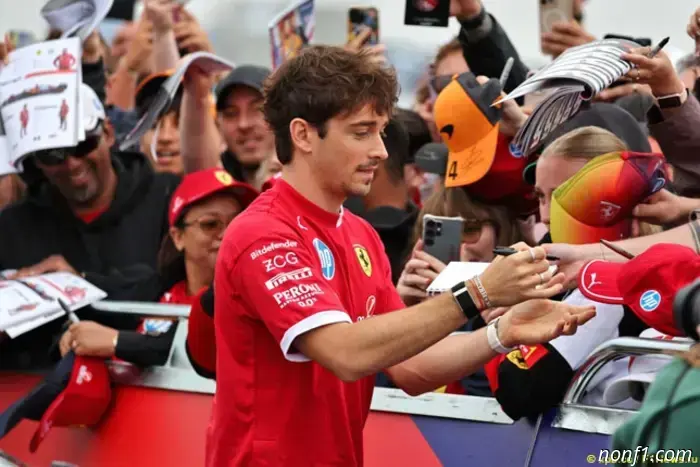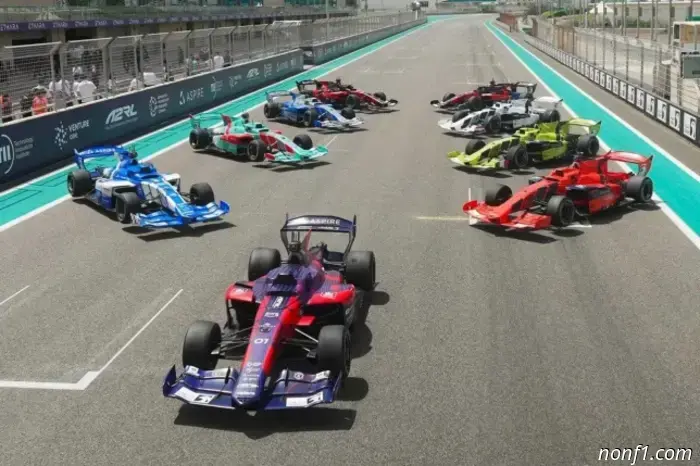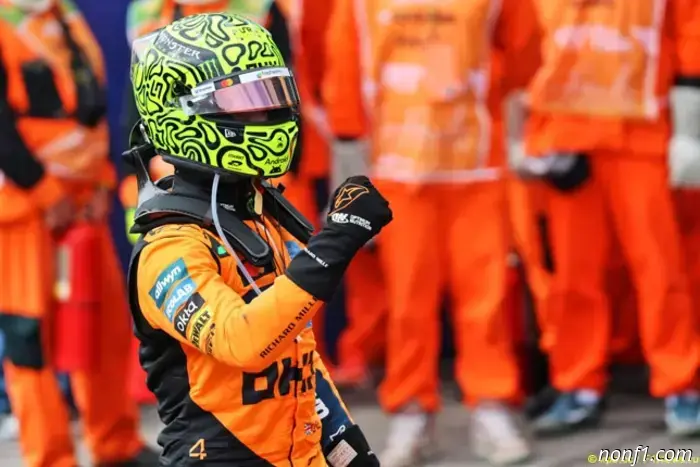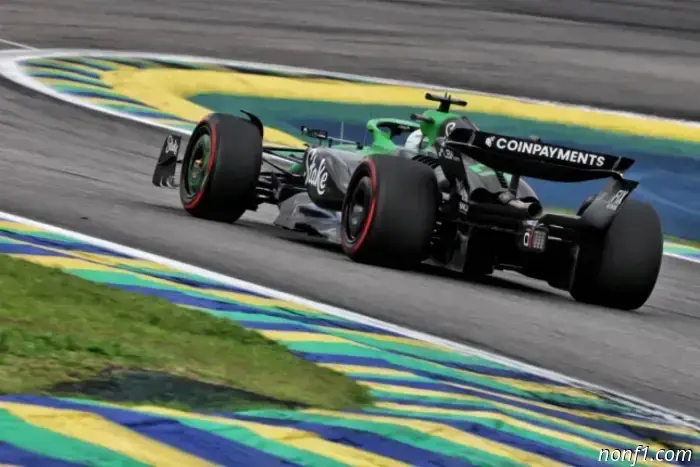Gary Anderson proposes a plan to increase the number of overtakes.
Gary Anderson, formerly a well‑known race car designer and now an expert for The Race, believes that two mandatory pit stops will not solve Formula 1’s overtaking problem, and offers his plan…
Lately the FIA, Formula 1 and the teams have been discussing the idea of two mandatory pit stops to make races more entertaining and increase the number of overtakes. But there are far more effective ways to achieve that.
When DRS first appeared in 2011 — a measure introduced to make overtaking easier — I was already convinced it would end up creating what we have now. I agree that this is largely explained by the aerodynamic characteristics of the cars, but when drivers are given a device that artificially aids overtaking they no longer need to use their imagination or engage in a kind of creative driving to get past a rival.
Gone are the days when masters like Ayrton Senna, Nigel Mansell and Gilles Villeneuve pulled off magnificent overtakes that had to be planned over several laps before launching an attack with absolute commitment.
Moreover, the FIA will have to find a way to define which defensive actions by drivers should be considered excessive, because the line between active defence and blatant blocking is very fine.
Next year we will see substantial changes in race approaches. The cars will be slightly lighter (though not light enough) and a little more compact, which should help to some degree. However, they will be equipped with active aerodynamic systems, and the efficient use of energy and the correct approach to recharging the battery will become even more important so that the state of charge stays sufficiently high — this is necessary both for attacking and for effective defence. In short, it’s not that simple.
But I definitely don’t want to see situations where for two thirds of a lap overtaking is impossible and the drivers are driving like pensioners. Then, on the remaining third of the lap, when everyone has banked enough energy for attack and defence, things will get lively — but because everyone will try it at once there still won’t be overtakes, because drivers will cancel each other out and interfere with one another.
The idea of two pit stops in itself is sensible and could be implemented if the rules required the mandatory use of all three tyre compounds. It is important to add another requirement: define a minimum percentage of the race distance that must be completed on each compound. But teams are already saying that in that scenario they would simply copy each other’s actions, so the gap between pit stops would be one, at most two, laps.
So I propose a different plan. First, the number of tyre compounds should be reduced to a maximum of three, and they should be used throughout the season. The compounds must differ substantially in performance, with a pace gap of no less than a second per lap.
When designing the tyre construction and calculating its life, you should plan for the worst‑case scenario using all the information gathered over 2024 and 2025. Then, in 2026, the tyres will have a sufficient safety margin because the new cars generate less downforce.
Second, change the tread thickness. If you use the same tyre construction for different compounds, the engineers’ task is simplified, and over that construction you should apply a thin layer of very hard rubber — say 1 mm or less. On top of that there should be a layer of the active compound, also fairly thin. For the Soft compound I propose making it no more than 1.5 mm, for Medium 1 mm, Hard 0.5 mm.
The point is that the thicker this layer, the better it retains heat. As it wears, maintaining the optimal operating temperature becomes more difficult, so the tyre’s effectiveness will start to fall.
The second, i.e. lower, rubber layer, which is required for safety reasons, could even be a different colour so it’s visible when the tyre has worn down to that level. Most importantly, this layer must be genuinely hard and should force the car to be much slower than the active compounds.
At the same time, teams must still be allowed to develop their own original tactical schemes. Then races might feature one, two, or in some cases even three pit stops. Drivers who want to minimise stops will have to drive carefully to reduce wear, while others can be more aggressive and try to go much faster.
To reduce the number of tyre sets Pirelli has to bring to a race — especially those that are barely used — the regulations should also be adjusted. In the first part of qualifying everyone should run only on the Hard tyre, in the second part on Medium, and in the final session on Soft.
Those same sets could be used in the race — with the exception that teams would be allowed to change only the set on which a driver made a mistake on his fastest lap, locked the brakes and created a flat spot.
Each driver should also have two additional sets of each compound. On a normal weekend one set of each compound could be used in the first practice and another set of each in the second. On weekends that include a sprint, the driver should get one set of each compound for practice and another set for sprint qualifying.
Thus, each driver would have only nine sets of slicks available at a normal race weekend, not 13. When a sprint is on the schedule, it would be 12.
If these approaches are used instead of introducing two mandatory pit stops, teams will have the opportunity to develop many different tactical schemes, and we can hope the races will become more interesting.
Finally, I risk completely upsetting the purists. If you watched the recent São Paulo Grand Prix and saw how Max Verstappen fought his way forward to finish third despite starting from the pit lane and suffering a puncture that left him last after six laps, the idea of using a reverse grid at some tracks where overtaking is possible might not seem so silly after all.

Other articles
 Las Vegas Grand Prix: Prediction Contest Stage
We are still accepting predictions for the Las Vegas Grand Prix results in our contest.
Las Vegas Grand Prix: Prediction Contest Stage
We are still accepting predictions for the Las Vegas Grand Prix results in our contest.
 Development of the 2026 Audi F1 car has already ceased, with the team now concentrating on the 2027 and 2028 models.
Audi's new F1 drivetrain has yet to complete a lap on a track, but more than 400 engineers are already diligently working to enhance it for upcoming seasons.
Development of the 2026 Audi F1 car has already ceased, with the team now concentrating on the 2027 and 2028 models.
Audi's new F1 drivetrain has yet to complete a lap on a track, but more than 400 engineers are already diligently working to enhance it for upcoming seasons.
 Daniil Kvyat is still faster than a driverless car.
A demonstration run was held at the Yas Marina circuit, during which the organizers showcased to the public the progress made in artificial intelligence applied to motorsport...
Daniil Kvyat is still faster than a driverless car.
A demonstration run was held at the Yas Marina circuit, during which the organizers showcased to the public the progress made in artificial intelligence applied to motorsport...
 Las Vegas Grand Prix: Betting Odds
Bookmakers have released the betting odds for victory in the upcoming Las Vegas Grand Prix.
Las Vegas Grand Prix: Betting Odds
Bookmakers have released the betting odds for victory in the upcoming Las Vegas Grand Prix.
 Hulkenberg: The relationship with the car is already somewhat better
Midway through the season, Nico Hülkenberg's qualifying performances were clearly worse than those of Gabriel Bortoleto, the season's debutant, but now the picture has changed...
Hulkenberg: The relationship with the car is already somewhat better
Midway through the season, Nico Hülkenberg's qualifying performances were clearly worse than those of Gabriel Bortoleto, the season's debutant, but now the picture has changed...
 Dreyer: We are deliberately copying our opponents' approaches
Audi continues to prepare intensively for its debut season in Formula 1, fully aware that it promises to be difficult...
Dreyer: We are deliberately copying our opponents' approaches
Audi continues to prepare intensively for its debut season in Formula 1, fully aware that it promises to be difficult...
Gary Anderson proposes a plan to increase the number of overtakes.
Gary Anderson, formerly a renowned race car designer, believes that two mandatory pit stops will not help solve the problem of overtaking in Formula 1, and proposes his plan...
